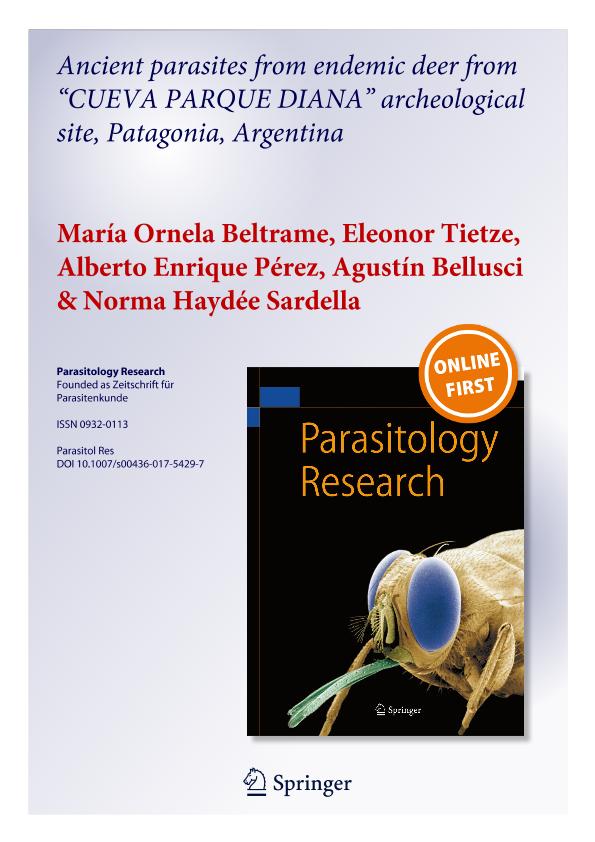Artículo
Ancient parasites from endemic deer from “CUEVA PARQUE DIANA” archeological site, Patagonia, Argentina
Beltrame, Maria Ornela ; Tietze, Eleonor
; Tietze, Eleonor ; Pérez, Alberto Enrique; Bellusci, Agustin; Sardella, Norma Haydee
; Pérez, Alberto Enrique; Bellusci, Agustin; Sardella, Norma Haydee
 ; Tietze, Eleonor
; Tietze, Eleonor ; Pérez, Alberto Enrique; Bellusci, Agustin; Sardella, Norma Haydee
; Pérez, Alberto Enrique; Bellusci, Agustin; Sardella, Norma Haydee
Fecha de publicación:
05/2017
Editorial:
Springer
Revista:
Parasitology Research
ISSN:
0932-0113
Idioma:
Inglés
Tipo de recurso:
Artículo publicado
Clasificación temática:
Resumen
The narrow Andean-Patagonian temperate rainforest strip in the west of southern South America is inhabited by two endemic species of cervids, the southern pudu (Pudu puda) and the huemul (Hippocamelus bisulcus), both cataloged as near threatened and threatened species, respectively. One of the possible causes of their declined number is the susceptibility to livestock diseases. Significant zooarchaeological records of both deer have been found throughout the Holocene from Patagonia. The present contribution reports the first paleoparasitological results obtained from coprolites of endemic deer from the archeological site “Cueva Parque Diana,” Neuquén Province, Argentina, and discusses the possible diseases found in ancient times. Thirty-four coprolites were fully processed, rehydrated, homogenized, sieved, subjected to spontaneous sedimentation, and examined by light microscopy. Thirty samples contained parasite remains. The presence of diverse parasitic diseases such as trematodioses, metastrongylosis, trichuriosis, strongylida gastroenteritis, dioctophymosis, and coccidiosis which could cause diseases in deer previous to the arrival of European livestock and the presence of zoonotic diseases in the hunters-gatherers and fishermen are discussed.
Palabras clave:
Cervid
,
Coprolites
,
Holocene
,
Paleoparasitology
Archivos asociados
Licencia
Identificadores
Colecciones
Articulos(CCT - MAR DEL PLATA)
Articulos de CTRO.CIENTIFICO TECNOL.CONICET - MAR DEL PLATA
Articulos de CTRO.CIENTIFICO TECNOL.CONICET - MAR DEL PLATA
Articulos(IIMYC)
Articulos de INSTITUTO DE INVESTIGACIONES MARINAS Y COSTERAS
Articulos de INSTITUTO DE INVESTIGACIONES MARINAS Y COSTERAS
Citación
Beltrame, Maria Ornela; Tietze, Eleonor; Pérez, Alberto Enrique; Bellusci, Agustin; Sardella, Norma Haydee; Ancient parasites from endemic deer from “CUEVA PARQUE DIANA” archeological site, Patagonia, Argentina; Springer; Parasitology Research; 116; 5; 5-2017; 1523-1531
Compartir
Altmétricas



